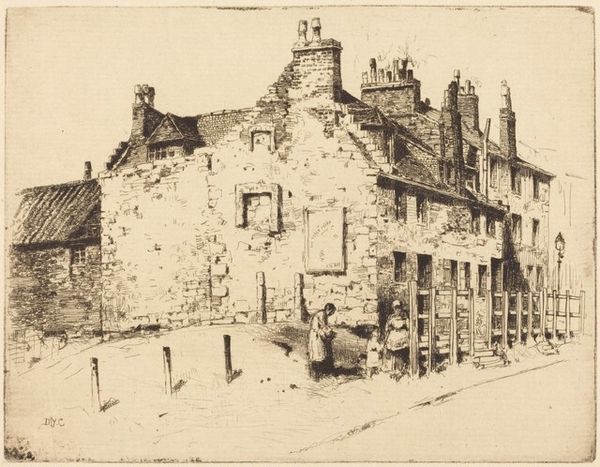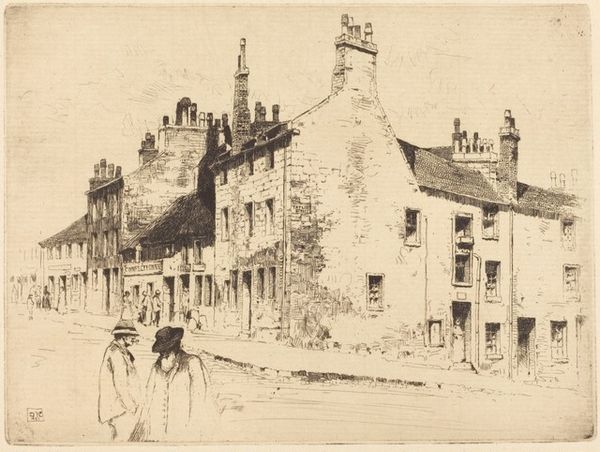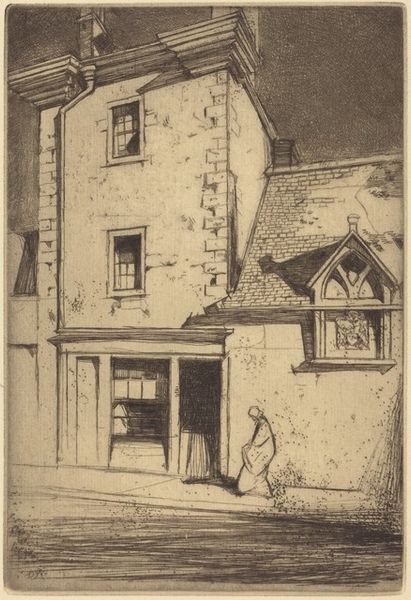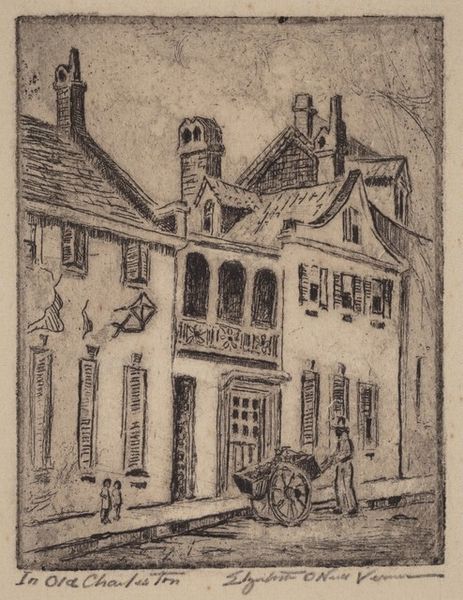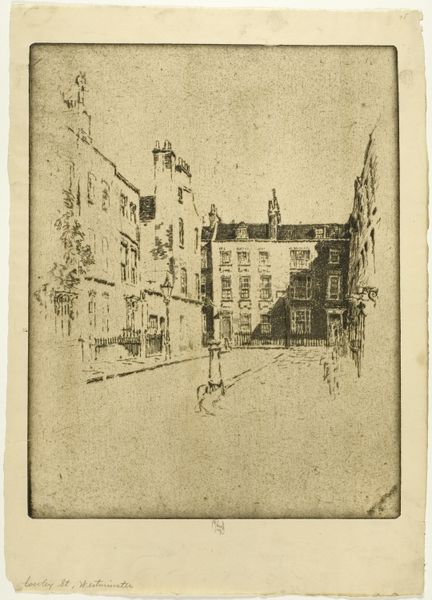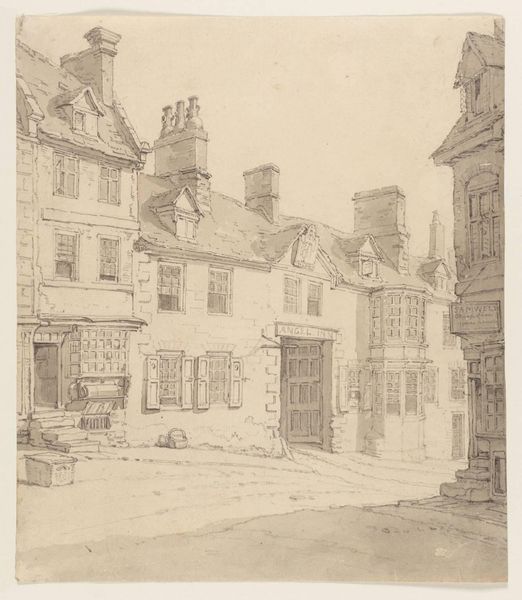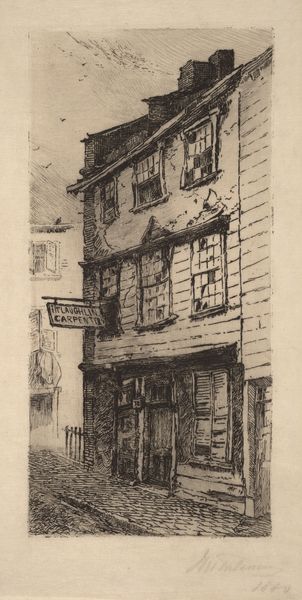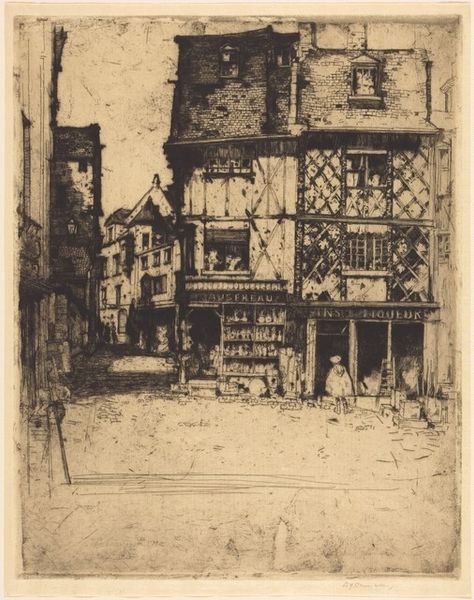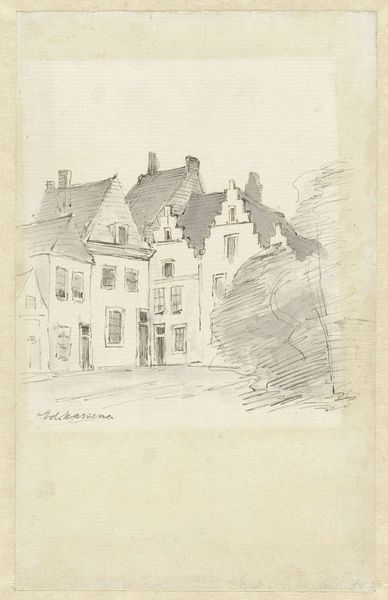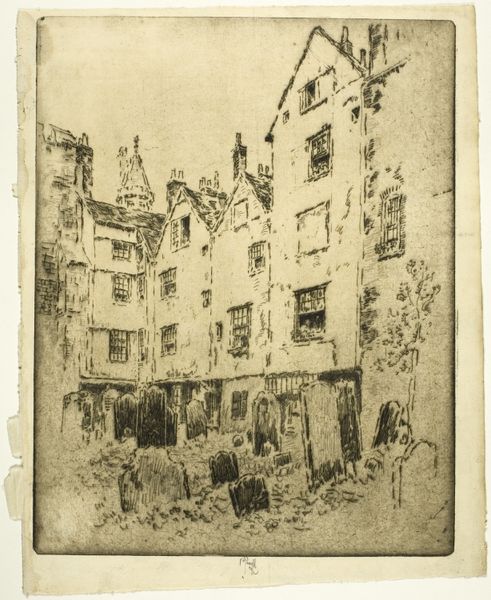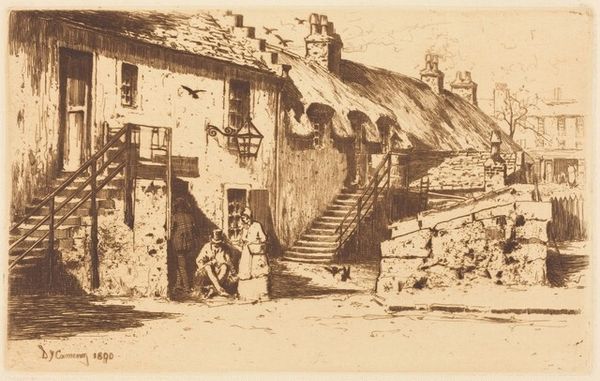
print, etching
# print
#
etching
#
arts-&-crafts-movement
#
landscape
#
cityscape
#
realism
Copyright: National Gallery of Art: CC0 1.0
Curator: "Old Houses, Stirling," an etching from 1892 by David Young Cameron. Looking at this closely, it seems like he used the etching needle to trace the memory of that historical site in Scotland. What is your initial take? Editor: There is a haunting atmosphere. The figures are cloaked, indistinct. There's a density to the shadows that suggests more than just architecture, but rather the weight of time. It is more dream than a street view. Curator: Agreed, the deep shadows. The use of etching captures something really profound here. We often read the cloaked figure as representative of mystery or impending events in the cultural imagination. But here they also symbolize memory. In "Old Houses, Stirling," Cameron invites the viewer to step back in time, engaging with a historical tableau of a medieval Scottish town. It’s Arts and Crafts but with this very particular vision. Editor: Precisely, these deep shadows. The art and craft movement here is less about decoration than revealing an authentic vision. Those indistinct figures—are they even meant to be individuals, or more like specters of past lives imprinted on the scene? There's also a stark realism to the architectural detail that makes this quite impactful. It's not just about aestheticizing the old; it's showing the conditions in which life was lived. Curator: Think about this composition. He hasn't idealised those medieval ruins for the viewers, but represented it with a deep, respectful observation. By the way, the cultural significance of Stirling lies in its historical position as the gateway to the Highlands, which probably made Stirling a stage for countless historical dramas and power struggles. Cameron probably wanted the people who come across this artwork, not just the townscape and architecture. The historical significance is as powerful as its composition and visual appeal. Editor: And perhaps by reducing those figures to mere suggestions, he's acknowledging the difficulty in fully knowing the past. It’s also highlighting the anonymity of history and those everyday individuals—as historical accounts tend to highlight heroic personas. It asks: Who lived in these houses, what were their names and the important dates of their lives? What do they care about? And how much is permanently unknowable? That seems significant to me. Curator: I concur entirely. It has left us something to ponder indeed. Editor: Definitely, this isn't just a cityscape. It’s a glimpse into another time and place, which evokes far more questions than answers, a remarkable meditation on our collective historical memories.
Comments
No comments
Be the first to comment and join the conversation on the ultimate creative platform.
